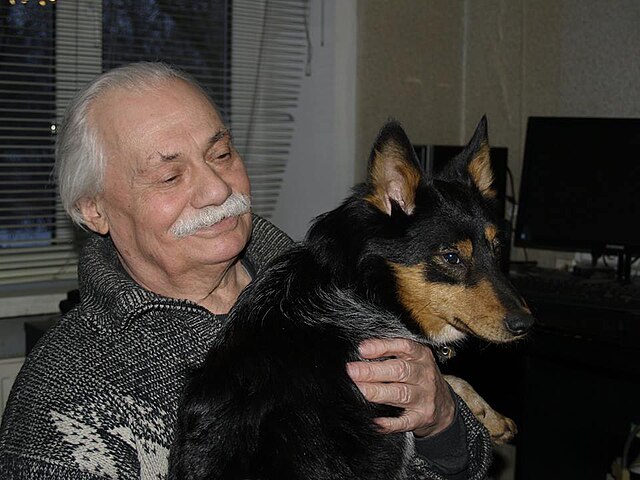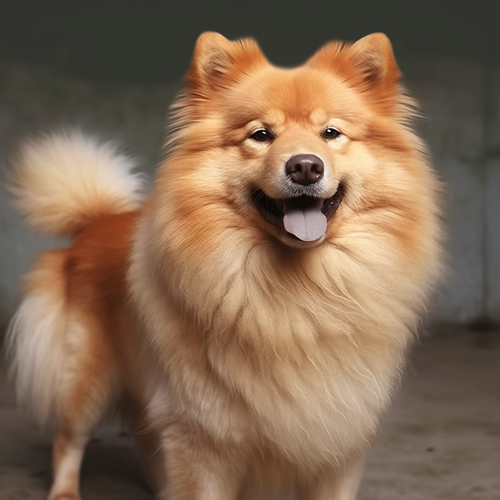Although the Swedish Elkhound (also known as the Jamthund) wasn’t recognized until the 1940’s, it is actually an ancient breed. Originally lumped together with the Norwegian Elkhound in dog shows, this spitz was used for hunting not only elk, but also lynx and bear. Some were also used to pull sleds in Northern Europe. Affectionate with his family but possessed with a strong prey drive – this normally composed dog turns into a chasing/hunting machine if he catches wind of a prey animal! He may or may not do well in homes with cats or other small animals, and supervision will likely be necessary in those circumstances.
Swedish Elkhounds are known to be dominant with other dogs. With proper socialization, they don’t tend to get startled easily nor do they get phased by new experiences, and this confident attitude can cross over into assertiveness (or even over-confidence) with other canines. That said, this “can do” attitude makes them adaptable to many different living situations, and it’s not uncommon for them to hunt all day with their owners and then come home and calmly play with the children at home. Many take on a protective role of the kids in the family and see it as their job to keep young ones safe.
With training, the Swedish Elkhound loves to please and enjoys learning new things! In fact, this working breed needs a job to do in order to stay mentally stimulated so obedience training should be included in his life. Be aware that he can be independent despite his loyal nature, so he may need plenty of engagement training up front to keep him focused on his handler. Take note that it is very important to socialize young puppies extensively before even beginning formal training. Under-socialized members of this breed can develop undesirable traits such as overly-protective behaviors around strangers, as well as reactivity around other dogs. Starting young and getting them used to being in situations such as these (in happy or even neutral ways) can help to keep them from developing issues later on.
The Swedish Elkhound has been described as patient and stable, but because of his independence and tendency toward dominant behaviors, does best with experienced owners. He, along with related breeds, is more closely related to the wolf than some other breeds and it shows in his personality. One can even see this ancient wolf-y lineage in his appearance such as his grey coloration (accompanied by lighter grey or cream markings) and his tapered muzzle. He has a quiet intelligence and a strong will that, while admirable, can also make him stubborn and difficult to live with for some. He needs a strong authority figure as an owner.
Swedish Elkhounds need regular exercise to stay both fit and happy – otherwise they can become bored and destructive. They need a bare minimum of 30 minutes strenuous work with their owner in addition to a large fenced yard to stretch their legs and run. This is a large, high energy breed that is known for their endurance and power and therefore requires plenty of time and space. Furthermore, an owner can’t use the excuse of bad weather to forego daily exercise – this spitz is well-adapted to working in extremely cold weather conditions! The breed loves being outdoors and the colder, the better!
The coat of the Swedish Elkhound is short but thick, with a close laying topcoat and abundant undercoat. It requires only infrequent baths but does need to be brushed several times a week so the woolly undercoat doesn’t get out of control. Keep in mind that this spitz lives between 12-13 years and will need this brushing his entire life in order to stay comfortable! Shaving is not an option. As mentioned above he also needs plenty of attention, exercise and training but when his needs are met, this is a unique dog with a special and loyal temperament.




